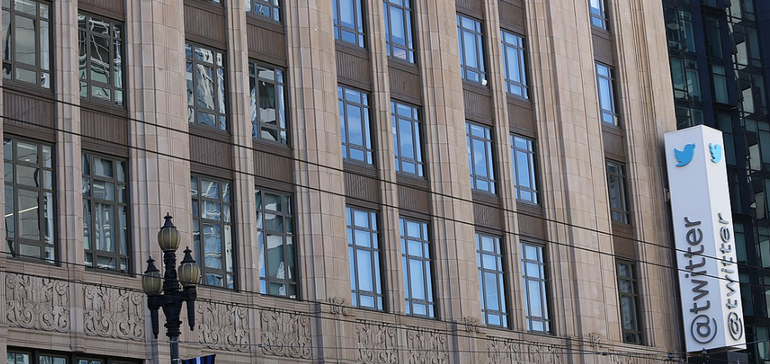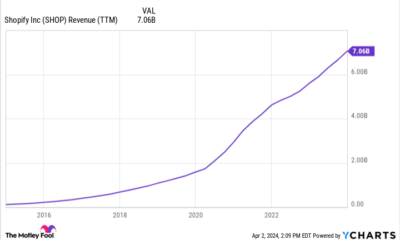SOCIAL
Musk Cuts Staff, De-Lists Twitter from the Stock Exchange on Day 1 as Chief

So, Elon Musk is now the ‘Chief Twit’ as he says, with the billionaire taking ownership of the platform late Thursday, and for now at least, appointing himself as interim CEO. Whether he stays on as chief, or appoints somebody else to that role, remains to be seen, but thus far, it does appear as though Musk plans to take a hands-on role in re-aligning the app in his vision.
Though what exactly that vision is remains unclear.
Musk’s first order of business was to fire several top execs, including CEO Parag Agrawal, clearing house of those whom he clearly didn’t get along with throughout the takeover process. Among them was also the platform’s head of policy Vijaya Gadde, who’s played a key role in many of Twitter’s biggest moderation and safety decisions over the past 10 years – it was Gadde, for example, who made the call to ban former US President Donald Trump from the app.
The loss of so much experience will hurt the company, no doubt. But Musk, of course, has an alternative view on what Twitter should be, so they were unlikely to ever see eye-to-eye anyway. And the departing execs will take home millions in payouts, which should soften the blow, before they’re re-appointed at another tech firm in similar roles.
Musk’s second key order of business, however, following those initial exec cuts, was to take Twitter private.
As reported by The New York Times:
“As part of buying Twitter, Mr. Musk is merging the social media company with X Holdings, a corporate entity that he established in Delaware to handle the deal. X is buying out all of Twitter’s stock and will control the service, and Mr. Musk will control the holding company. Twitter will be delisted from the New York Stock Exchange and its shares will no longer trade on public markets as of Nov. 8, according to a securities filing.”
Thus, Twitter will no longer be a listed entity, and will no longer have to provide performance updates, so we won’t know exactly how many users Twitter has, how its latest subscription tools are performing, how its costs and expenses are rising. Some of these details will still be available, but they won’t be officially reported every quarter, which will reduce insight into the Musk Era at the app.
De-listing will also see the dissolution of Twitter’s current board of directors, with Musk to appoint a new board at some stage. Who he appoints here could also point to his future plans, which, again, remain relatively vague, outside of a few key hints.
To recap, Musk has said, or at least implied, that his priorities will be:
- Eliminating bots
- Expanding the rules around what users can say in the app (within the law)
- Open sourcing feed algorithms
- Increasing paying subscribers
Each of these elements will have variable impacts, though more recently, Musk has also sought to reassure advertisers that there won’t be any major changes to how they operate, as a means to keep that income stream flowing.
But eventually, Musk wants to reduce the platform’s reliance on ads, and make subscriptions a bigger part of Twitter’s income.
In one exchange with Twitter employees this week, Musk reiterated his plan to boost subscription intake to 50% of the platform’s revenue, which he also views as a potential solution to the app’s bot problem.
Musk has floated this concept in the past, that by lowering the price of Twitter’s subscription offering Twitter Blue to $2 per month, and giving every paying subscriber a blue checkmark (or similar marker), that would make it less tenable for bot companies to keep making more profiles, because eventually, all the real human accounts would be verified, making the bots easier to spot.
But as with almost everything that he says, Musk has switched his thinking on this too:
Twitter will always be free for casual users, but maybe a slight cost for commercial/government users
— Elon Musk (@elonmusk) May 3, 2022
Maybe, then, Musk simply plans to start charging businesses to use the app – though that could also be a hard sell if, as expected, he starts bringing back previously banned users, like Trump, with a range of advertisers already planning to boycott the app if that happens.
It’s impossible to know the direction that Musk will take things, because I don’t think he knows, while Musk habitually revises his thinking, then denies that he ever suggested anything else.
In any event, we’ll likely have to wait for a little bit longer to see what’s coming, because Twitter has paused all site changes till November 1st due to the Musk takeover, and the potential for rogue employees to make changes on the way out the door.
But some staff are already being let go, and Musk could reinstate any user at any time. Right now, Musk says that he’s ‘digging into’ Twitter’s bans and shadowbans, to get the bottom of what’s happening on this front.
After that, nobody knows what will come next for the app.
UPDATE: Musk says that Twitter will form a new ‘content moderation council’ to decide on what can and can’t be posted to the app.
Twitter will be forming a content moderation council with widely diverse viewpoints.
No major content decisions or account reinstatements will happen before that council convenes.
— Elon Musk (@elonmusk) October 28, 2022
Which sounds a lot like Meta’s Oversight Board, which provides alternative means to review the decisions of Meta’s moderation team. The Oversight Board even reviewed the company’s decision to ban former US President Donald Trump (and found it to be the right one), which, seemingly, will be one of the first tasks allocated to Musk’s similar council, which will be established, presumably, soon.
Again, it seems like a bit of a back-track from Musk, now that the reality of dealing with proper content moderation is in his lap. Musk has loudly and repeatedly criticized Twitter’s past moderation efforts, and while the council approach is likely the right way to go, in ensuring independent experts are consulted to advise on such, as opposed to just going free for all, it’s still a shift from his gung-ho approach from the peanut gallery.
I’m also not sure that it bodes well for Musk’s future plans for the app. Most of the ideas that Musk has touted for reforming Twitter, and building it into a social media powerhouse, have been tried and tested many times before, by every other app in the space. Musk has suggested making Twitter more of a utility tool, like Chinese messaging apps, he’s suggested replicating the addictiveness of TikTok by updating Twitter’s algorithms, he’s talking about getting more people to pay to use the platform.
Like, yeah, every social app has considered these ideas, every platform has tried these things at different times. They haven’t worked.
The fact that Musk, once again, is falling back on concepts that have been already been tried doesn’t seem to suggest that he’s going to be bringing a lot of fresh takes to the app.
As per Musk, no major decisions on reinstatements, like the unbanning of Donald Trump, will happen before the council is established. So you’ll have to wait a little longer for the next stage.
SOCIAL
Snapchat Explores New Messaging Retention Feature: A Game-Changer or Risky Move?

In a recent announcement, Snapchat revealed a groundbreaking update that challenges its traditional design ethos. The platform is experimenting with an option that allows users to defy the 24-hour auto-delete rule, a feature synonymous with Snapchat’s ephemeral messaging model.
The proposed change aims to introduce a “Never delete” option in messaging retention settings, aligning Snapchat more closely with conventional messaging apps. While this move may blur Snapchat’s distinctive selling point, Snap appears convinced of its necessity.
According to Snap, the decision stems from user feedback and a commitment to innovation based on user needs. The company aims to provide greater flexibility and control over conversations, catering to the preferences of its community.
Currently undergoing trials in select markets, the new feature empowers users to adjust retention settings on a conversation-by-conversation basis. Flexibility remains paramount, with participants able to modify settings within chats and receive in-chat notifications to ensure transparency.
Snapchat underscores that the default auto-delete feature will persist, reinforcing its design philosophy centered on ephemerality. However, with the app gaining traction as a primary messaging platform, the option offers users a means to preserve longer chat histories.
The update marks a pivotal moment for Snapchat, renowned for its disappearing message premise, especially popular among younger demographics. Retaining this focus has been pivotal to Snapchat’s identity, but the shift suggests a broader strategy aimed at diversifying its user base.
This strategy may appeal particularly to older demographics, potentially extending Snapchat’s relevance as users age. By emulating features of conventional messaging platforms, Snapchat seeks to enhance its appeal and broaden its reach.
Yet, the introduction of message retention poses questions about Snapchat’s uniqueness. While addressing user demands, the risk of diluting Snapchat’s distinctiveness looms large.
As Snapchat ventures into uncharted territory, the outcome of this experiment remains uncertain. Will message retention propel Snapchat to new heights, or will it compromise the platform’s uniqueness?
Only time will tell.
SOCIAL
Catering to specific audience boosts your business, says accountant turned coach

While it is tempting to try to appeal to a broad audience, the founder of alcohol-free coaching service Just the Tonic, Sandra Parker, believes the best thing you can do for your business is focus on your niche. Here’s how she did just that.
When running a business, reaching out to as many clients as possible can be tempting. But it also risks making your marketing “too generic,” warns Sandra Parker, the founder of Just The Tonic Coaching.
“From the very start of my business, I knew exactly who I could help and who I couldn’t,” Parker told My Biggest Lessons.
Parker struggled with alcohol dependence as a young professional. Today, her business targets high-achieving individuals who face challenges similar to those she had early in her career.
“I understand their frustrations, I understand their fears, and I understand their coping mechanisms and the stories they’re telling themselves,” Parker said. “Because of that, I’m able to market very effectively, to speak in a language that they understand, and am able to reach them.”Â
“I believe that it’s really important that you know exactly who your customer or your client is, and you target them, and you resist the temptation to make your marketing too generic to try and reach everyone,” she explained.
“If you speak specifically to your target clients, you will reach them, and I believe that’s the way that you’re going to be more successful.
Watch the video for more of Sandra Parker’s biggest lessons.
SOCIAL
Instagram Tests Live-Stream Games to Enhance Engagement

Instagram’s testing out some new options to help spice up your live-streams in the app, with some live broadcasters now able to select a game that they can play with viewers in-stream.
As you can see in these example screens, posted by Ahmed Ghanem, some creators now have the option to play either “This or That”, a question and answer prompt that you can share with your viewers, or “Trivia”, to generate more engagement within your IG live-streams.
That could be a simple way to spark more conversation and interaction, which could then lead into further engagement opportunities from your live audience.
Meta’s been exploring more ways to make live-streaming a bigger consideration for IG creators, with a view to live-streams potentially catching on with more users.
That includes the gradual expansion of its “Stars” live-stream donation program, giving more creators in more regions a means to accept donations from live-stream viewers, while back in December, Instagram also added some new options to make it easier to go live using third-party tools via desktop PCs.
Live streaming has been a major shift in China, where shopping live-streams, in particular, have led to massive opportunities for streaming platforms. They haven’t caught on in the same way in Western regions, but as TikTok and YouTube look to push live-stream adoption, there is still a chance that they will become a much bigger element in future.
Which is why IG is also trying to stay in touch, and add more ways for its creators to engage via streams. Live-stream games is another element within this, which could make this a better community-building, and potentially sales-driving option.
We’ve asked Instagram for more information on this test, and we’ll update this post if/when we hear back.
-

 PPC5 days ago
PPC5 days ago19 Best SEO Tools in 2024 (For Every Use Case)
-

 MARKETING6 days ago
MARKETING6 days agoStreamlining Processes for Increased Efficiency and Results
-
SEARCHENGINES6 days ago
Daily Search Forum Recap: April 17, 2024
-

 SEO6 days ago
SEO6 days agoAn In-Depth Guide And Best Practices For Mobile SEO
-

 PPC6 days ago
PPC6 days ago97 Marvelous May Content Ideas for Blog Posts, Videos, & More
-
SEARCHENGINES5 days ago
Daily Search Forum Recap: April 18, 2024
-

 MARKETING6 days ago
MARKETING6 days agoEcommerce evolution: Blurring the lines between B2B and B2C
-
SEARCHENGINES4 days ago
Daily Search Forum Recap: April 19, 2024
















You must be logged in to post a comment Login